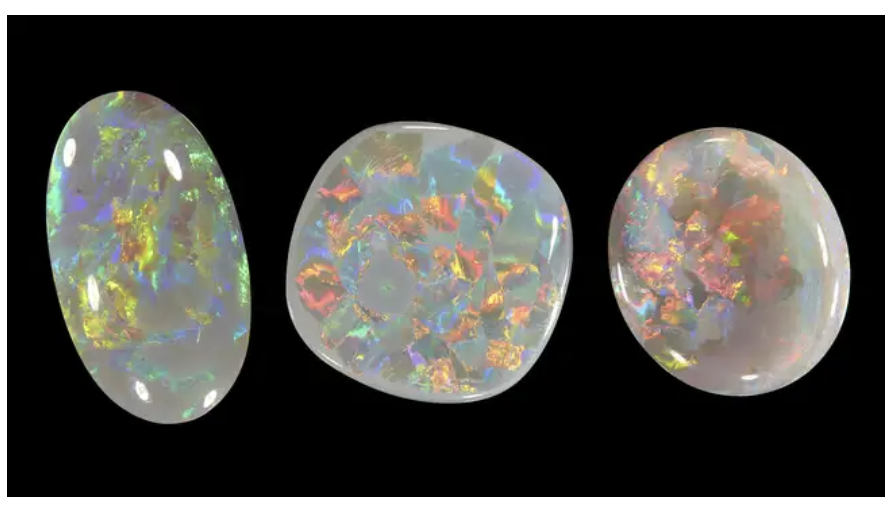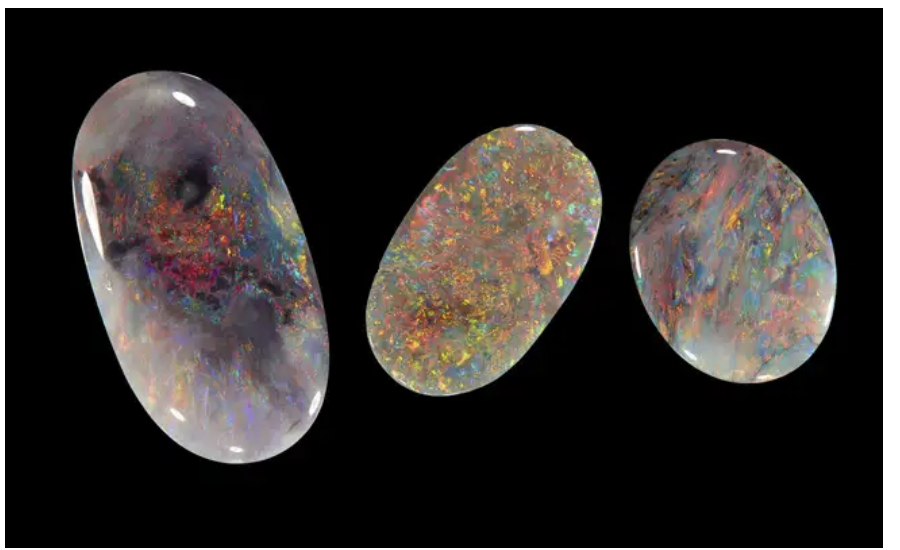What is an Opal and why does it display multiple colours
Opal is a hydrated amorphous silica and has some water content in its structure which may vary from 6% to 10% by weight and is classified as a mineraloid rather than a mineral unlike crystalline forms of silica which are termed minerals. Opals are formed at relatively low temperatures and can be found deposited in various types of rock and are found in fissures. Opal has a structure composed of different layers of microscopic silica spheres. It is these allternate layers that cause the opal to diffract light at differing wave lengths producing the distinctive display of various colours generally termed as play of colour.
What is the history of opals and when where they first recorded
The name opal is generally believed to be derived from the Sanskrit word upala meaning jewel and later the Greek derivative opállios. Opals were rare and highly prized in European antiquity, The only source where opals were available was Cervanica beyond the Roman Frontier in Slovakia until the 19th century when vast quantities of precious opal were discovered in Australia.
Lot 218: Three unmounted dark/semi-black opals
What other types of opal are there
There are two principal types of opal, precious opal which demonstrates a play of colour and common opal which does not. Common opals include Peruvian opal, a semi blue green stone found in Peru, and Fire opal, a translucent orange stone found mainly in Querétaro, Mexico. Precious opal can also be divided into categories. Black opal when the opal has a dark grey to black body tone, dark opal when the body tone is a lighter grey and white opal that are more of a milky hue but still have play of colour. Opals that are semi transparent giving an almost 3D effect are termed crystal opals. Boulder opal is a unique type of opal that is only found in Queensland, where the opals are formed in ironstone mother rock and normally have strong play of colour.
Lot 214: Three unmounted oval dark/semi-black opals
Where are opals located?
The primary sources of opal are Australia and Ethiopia. Australian opals are found at Coober Pedy and fine black opals at Lightening Ridge. Ethiopian opals are often very transparent and are commonly polished into round beads. The Virgin Valley] opal fields of Humboldt County in northern Nevada produce a wide variety of precious black, crystal, white, fire, and lemon opal. Other sources include Mexico the Czech Republic, Canada, Slovakia, Hungary, Turkey, Indonesia, Brazil Honduras, Guatemala, and Nicaragua.
What should one look for when valuing and collecting opals
Black opals are generally considered the most desirable. The finest opals including white opals are those that show the strongest play of colour. Black opals often exhibit peackockblue and geen tones, but if the addition of red and orange are present the value increases. The colours form varying patterns, the most prized being either flag stone or harlequin. When Examining opals it is crucial to spot whether small fine cracks known as crazing (due to dehydration of to stone) are present as this has a depreciating effect on the opal.






